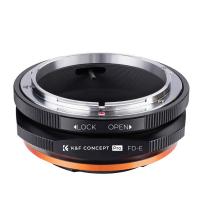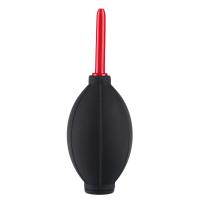How Does A Movie Projector Work?
Understanding How a Movie Projector Works: A Comprehensive Guide
In the age of digital streaming and high-definition televisions, the movie projector remains a fascinating piece of technology that has played a crucial role in the history of cinema. Whether you're a film enthusiast, a student of technology, or simply curious about how things work, understanding the mechanics behind a movie projector can be both enlightening and rewarding. This article delves into the intricacies of how a movie projector works, covering its history, components, and the science behind its operation.
The Evolution of Movie Projectors
Before diving into the technical aspects, it's essential to appreciate the historical context of movie projectors. The journey began in the late 19th century with the invention of the Kinetoscope by Thomas Edison and William Dickson. This device allowed a single viewer to watch a short film through a peephole. However, it was the Lumière brothers who revolutionized the industry with the Cinématographe in 1895, which could project images onto a screen for a larger audience.
Over the years, movie projectors have evolved from mechanical devices using film reels to sophisticated digital systems. Despite these advancements, the fundamental principles of projection have remained consistent.
Key Components of a Movie Projector
To understand how a movie projector works, it's crucial to familiarize yourself with its main components:
1. Light Source: The light source is the heart of the projector. In traditional film projectors, this is typically a high-intensity lamp, such as a xenon arc lamp. In digital projectors, it can be an LED or laser light source.
2. Film or Digital Media: In film projectors, the movie is stored on reels of film. Each frame of the film contains a still image, and the frames are displayed in rapid succession to create the illusion of motion. In digital projectors, the movie is stored as a digital file.
3. Lens: The lens focuses the light passing through the film or digital media onto the screen. The quality and type of lens can significantly impact the clarity and sharpness of the projected image.
4. Shutter: The shutter is a mechanical device that opens and closes rapidly to control the light passing through the film. This prevents the audience from seeing the transition between frames, creating a smooth viewing experience.
5. Aperture: The aperture is an adjustable opening that controls the amount of light passing through the lens. It helps in achieving the correct exposure and contrast.
6. Projection Screen: The screen is where the final image is displayed. It is usually made of a reflective material to enhance brightness and clarity.
The Science Behind Projection
The operation of a movie projector is based on the principles of optics and human visual perception. Here's a step-by-step breakdown of how a traditional film projector works:
1. Light Generation: The light source generates a powerful beam of light. In film projectors, this light passes through a heat filter to prevent damage to the film.
2. Film Advancement: The film is advanced frame by frame using a sprocket mechanism. Each frame pauses momentarily in front of the light source.
3. Shutter Operation: The shutter opens to allow light to pass through the film frame and then closes to block the light as the film advances to the next frame. This happens so quickly (typically 24 frames per second) that the human eye perceives a continuous motion.
4. Image Projection: The light passing through the film frame is focused by the lens and projected onto the screen. The lens can be adjusted to ensure the image is sharp and correctly aligned.
5. Sound Synchronization: In sound films, the audio track is usually located on the side of the film strip. A separate optical or magnetic reader decodes the audio and synchronizes it with the projected images.
Digital Projectors: A Modern Twist
While traditional film projectors rely on physical film strips, digital projectors use digital files and advanced technologies to achieve the same effect. Here's how a digital projector works:
1. Digital Light Processing (DLP): One of the most common technologies in digital projectors is DLP. It uses a digital micromirror device (DMD) chip, which contains millions of tiny mirrors that tilt to reflect light. Each mirror represents a pixel in the projected image.
2. Liquid Crystal Display (LCD): Another popular technology is LCD, which uses liquid crystal panels to modulate light. The light passes through red, green, and blue LCD panels, which combine to create the full-color image.
3. Light Source: Digital projectors use LED or laser light sources, which are more energy-efficient and have a longer lifespan than traditional lamps.
4. Image Processing: The digital file is processed by the projector's internal computer, which converts it into a format that can be displayed by the DMD or LCD panels.
5. Projection: The modulated light is focused by the lens and projected onto the screen, similar to a film projector.
Practical Applications and Considerations
Understanding how a movie projector works can be beneficial in various practical scenarios:
1. Home Theater Setup: If you're setting up a home theater, knowing the differences between film and digital projectors can help you make an informed decision. Digital projectors are generally more user-friendly and offer higher resolution and better color accuracy.
2. Maintenance and Troubleshooting: For those who own projectors, understanding the components and operation can aid in maintenance and troubleshooting. For instance, knowing how to replace a lamp or clean the lens can prolong the life of your projector.
3. Educational Purposes: Educators can use this knowledge to teach students about the principles of optics, light, and human visual perception. Demonstrating how a projector works can make these concepts more tangible and engaging.
4. Film Preservation: For film archivists and preservationists, understanding the mechanics of film projectors is crucial. Proper handling and projection of film can prevent damage and ensure the longevity of historical footage.
The movie projector is a marvel of engineering that combines principles of optics, mechanics, and digital technology to bring stories to life on the big screen. From the early days of the Cinématographe to the advanced digital projectors of today, the core concept remains the same: projecting a series of images in rapid succession to create the illusion of motion.
Whether you're a cinephile, a tech enthusiast, or someone looking to set up a home theater, understanding how a movie projector works can enhance your appreciation of this incredible device. By grasping the intricacies of its components and operation, you can make informed decisions, perform basic maintenance, and even educate others about the fascinating world of movie projection.
















There are no comments for this blog.